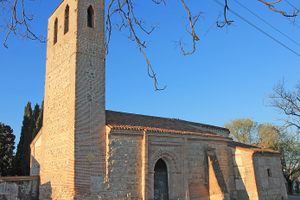About
This meandering bridge in Spain is a unique example of Baroque civil architecture. Built under the reign of King Carlos III in the Real Sitio de la Casa de Campo, Puente de la Culebra (Snake Bridge) is one of the most peculiar bridges in Madrid.
Puente de la Culebra was constructed in 1723. It earned its nickname due to the construction's wavy parapets, which resemble a snake slithering. The bridge was created by Pedro de Ribera, who built other pieces in Madrid.
The Meaques is the most important stream in Casa de Campo, and a tributary of the Manzanares River. Horse-drawn carriages were too wide to make the pass, yet for years the bridge served as a crossing point for herds of cattle as they passed through Madrid. This was by design.
The influence of Italian Baroque is very easy to see when you study the bridge. The arches are made of brick, while the parapet is made of granite topped by ten ornamental pinnacles.
In addition to its historical and artistic importance, the Puente de la Culebra is also a symbol of the Casa de Campo and a meeting place for the people of Madrid. It has witnessed celebrations, cultural events, and recreational activities over the years.
Related Tags
Know Before You Go
Metro: Line 5 Casa de Campo stop is the closest to the Snake Bridge.
The bridge is also easy to reach from the Madrid Zoo if you are willing to walk about 20 minutes.
Published
April 28, 2025








































